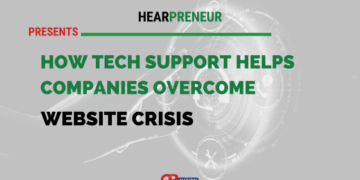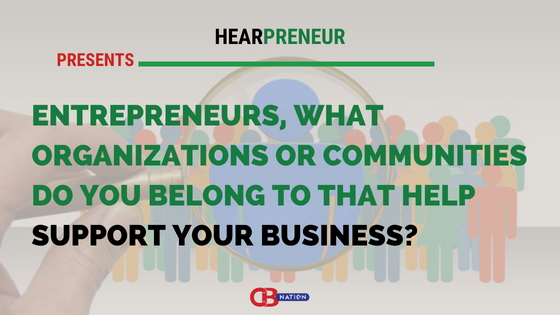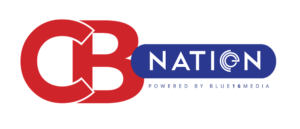Every leading position in business requires a demonstration of diverse skills and leadership styles.
Working environments differ thus requires the leader to master the best style that works in that business. For instance, an authoritative style may not suit a business in its initial stages of development.
Here’s how entrepreneurs and business owners lead their teams;
#1- A coaching style

My team consists of so many talented personalities with diverse backgrounds and skillsets, there's no one size fits all approach to people. *Coaching writers or team leaders and helping them bring out their best qualities is a priority. Not only does this improve collaboration, but it's a really effective way to lead remote teams that are dispersed across the country.
Thanks to Vincent D’Eletto, WordAgents!
#2- Very participative

Since my team is composed of people mostly from other parts of the world, the best way for me to bring them closer is to make them feel that they are part of the decision-making process. This is so they would know that no matter what their role is in the company, their input is always valued. Afterall, I hired them for their expertise and not simply to follow a set of instructions every day.
Thanks to Jordan Fuller, Golf Influence!
#3- Accessible

When I hired my first employee I made it a priority to be available, open, and transparent with company decisions, in order to give that employee the clearest guidance on their duties and responsibilities. Our company has grown considerably since then, and while my workload has increased, I still make it a priority to engage with accessibility in all the decisions we make. No team member should feel left out of a leader's organization.
Thanks to Reuben Yonatan, GetVoIP!
#4- Individualized, and balanced

I would describe my leadership style as individualized, and balanced. Each of the employees has different strengths, and it is my job to provide the proper environment and structure to play to those strengths. In terms of being balanced, we work very hard to make sure our employees know how valuable they are to the company through work life balance and performance incentives. This benefits the employees by giving them a career with a company that cares, and benefits the business by increasing retention. Everyone wins.
Thanks to Ralph Severson, Flooring Masters!
#5- Collaborative

I tend to ask lots of questions and get input from all parts of the organization because I have found some of the best ideas come from unexpected people. I prefer to over-communicate and delegate a lot so people feel invested in the process and contributing to the team’s success. I think people do their best work in a give and take/collegial environment.
Thanks to Paige Arnof-Fenn, Mavens & Moguls!
#6-A delegating one

This means that I give them tasks and the freedom on how to do them. Basically, I paint a picture to my employees and I let them do their tasks alone. This way, I am able to empower them and give them the autonomy to make the best decisions for the company. At the same time, I put confidence in both myself and them. If ever they make a mistake, I believe that the learning and growth they get overpowers the flaw they may produce.
Thanks to John Stevenson, My GRE Exam Preparation!
#7- Mixture between a helpful style and goal-orientated

Basically, I put a big focus on setting and achieving goals at a high quality, but also try to be as helpful to my employees as I can, ensuring they always get the help that they need. I can recognize when goals being set might be a bit unachievable (or too achievable) depending on the circumstances, and will guide my employees to set more realistic goals. Whenever you’re growing a business, goals are one of the most important factors of growth because you always have something to work towards. This is why I take on a leadership style that revolves around goals.
Thanks to Teri Shern, Conex Boxes!
#8- Consciously inclusive

I'd describe my leadership style as being consciously inclusive. Here I'm striving to mitigate my own unconscious biases that could not just get in the way of leading my team effectively but could also erode trust: which is the most important facet to leadership success.
Thanks to Dr. Steven R. Yacovelli, TopDog Learning Group, LLC!
#9- Democratic or participative

For that reason, at Kickoff, the leadership style we have found most effective is democratic or participative leadership. When we work together as a team towards the same goal with full transparency, we welcome team members to come up with ideas and strategies that are sometimes even more effective than our process. We help each other out with effective workout methods, best results, how to communicate with clients and how to avoid problems or handle a situation. Sometimes, our youngest team members come up with better ideas and solutions than how we’ve been doing things and allowing them to come forward and participate has made our progression and growth and success increase.
Thanks to John Gardner, Kickoff!
#10- Very team focused

I've worked a lot of jobs over the years and had a lot of different bosses and what all of the good bosses had in common is that they viewed their employees as a team rather than as subordinates. This means listening to their ideas and feedback as opposed to adopting a way or the highway attitude. I try my best to lead in this way and I honestly think it helps me get a lot more out of my employees than if I acted like some kind of tyrant.
Thanks to Mark Daoust, Quiet Light!
#11- Empowering on every level

The way I lead my team is by encouraging everyone to trust in their ideas and abilities and feel as if they can make a big impact on our operation regardless of their position. I want every staff member, even entry-level employees, to feel empowered to make contributions and share ideas they feel can move the company forward at the highest capacity. If anyone has a suggestion or recommendation for a better way of doing things, I'm always open to hearing them out and implementing them if they improve what we currently have. As a leader, I'm constantly telling my team members to believe in themselves and their skill sets and empowering them to speak up and share their suggestions, which oftentimes helps us to significantly drive progress forward.
Thanks to Kristaps Brencans, On The Map!
#12- Personable and intentional

Being one of the few women in the construction industry, I've seen first-hand how leadership can either push people away, or reel people in. I choose to be intentional with the people I lead, remembering names, events, and details in order to make them feel seen. Pairing this personable approach with words of encouragement to my field workers helps them to know I value them both on a personal and professional level. I wouldn't trade this job for the world!
Thanks to Sarah Faulkner, Mid-Shore Exteriors!
#13- Positive Intensity

I believe that the role of the CEO is to be the engine of energy that will filter down through every aspect of a business. I am naturally a ball of energy, and this has really shaped my leadership style for the better. I want there to be a level of intensity to the workday. I think when you have a relaxed work environment, your results will be relaxed. I want the day to hum with activity. I want problems to feel pressing so that I can wring the sharpest focus out of my employees. When intensity is lacking, people subconsciously allow themselves to check out. Positive intensity means I lead with love and compassion. Intensity is often considered a negative word, which is why I have to qualify it. Positive intensity means you are steadfast, not prone to dejection, and driven to create solutions rather than dwelling on problems. When a shark stops moving forward, it dies. This is how I approach business, but more like a pleasant shark with a cute smile and charming demeanor.
Thanks to Natalie Sullivan, Cooler Air Toda!
#14- Transformational

Being a CEO of a fast-growing startup, I consider myself a transformation leader. I have strong visions of the future- make my product Asia's largest tech talent pool. A startup needs to be highly agile and adapt rapidly therefore every one of my employees takes part in shaping the company’s future. I often establish a common purpose for the team and help them navigate directions. The concept is similar to setting OKRs- I define team goals and share key results so my employees can make plans to measure them along the way. I also tend to develop effective communication which is essential in leadership. It helps to get the message across effectively and encourages the team to act on it together , rather than groping their way out. Overall, I innovate and create changes by motivating my employees. Naturally, the results would lead to the growth of future success.
Thanks to Trantor Liu, CakeResume!
#15- Innovative

I brought a culture of innovation to CureSkin, growing from my time at Google. This commitment to innovation informs all of my decisions, making me a flexible leader who is always looking towards new ways to succeed. This innovative leadership style is why I was able to easily embrace remote work during the pandemic despite my previous hesitance to hire remote team members and why I’m able to lead my company as we transition into a hybrid work model.
Thanks to Guna Kakulapati, CureSkin!
#16- Two styled leadership

I love to embody a hands-off leadership style plus coaching, just pointing my team in the right direction with minimal oversight on my end. Of course, coaching and training your employees well is crucial to making this all work. I love to build smart, hard-working marketers whom I can trust to do the work well. Delegating tasks is very important for today's leaders, and my leadership style allows me to stay on top of everything and focus on team growth above all.
Thanks to Aaron Agius, Louder.Online!
#17- Curious

Cultivating my own curiosity and curiosity in others has been the #1 key to my success. Being a curious leader has enabled a free-flowing of ideas by creating a safe place for people to pitch outlandish concepts and explore their merit – without fear of judgement. It has also created a container to talk about crucial topics that might otherwise be left unsaid and therefore unaddressed (e.g., interpersonal conflict, underperformance, groupthink). It takes clear intention to consistently come from a place of curiosity however it continues to prove as the best investment of my energy.
Thanks to Christina J. Eisinger
#18- Authoritarian leadership

As a website manager, I need to work with over 10 colleagues each day, including writers, programmers, and marketers. Each of them has their strengths and can do their tasks well enough. But for the team, it needs me to make the blueprint to prevent us from getting lost. Then, I delegate tasks to the best-equipped one and ask him/her to do according to our plan, and finally, optimizing the strategies basing on the results.
Thanks to Thomas Brown, WigsMaster!
#19- Empathetic

I can say that I’m an empathetic leader that puts his customers and employees first. Of course, empathy alone won’t help my company last long but knowing the needs and happiness of my employees and customers help me make the right decisions. For example, I have many onshore employees who have families. I understand how important it is for them to spend enough time with their families. This is why I don’t force any of my employees to work overtime. I understand that my customers may have a difficult time setting up their grills for the first time especially if they’re new to pellet grills. This is why we try to walk them through the process of setting it up and give enough resources for them to learn how to use their new grills properly.
Thanks to Michael Humphreys, Z Grills Australia!
#20- Follows the contingency plan theory

I would describe my leadership style as following the contingency plan theory. I plan, plan, and then plan again. Whether this relates to saving funds in the event of disaster, conducting thorough market research, or having multiple backups in case anything goes wrong, contingencies are my biggest strength. It allows me to lead my businesses with confidence and clarity, because I have a thorough plan for most outcomes. People can always look to me for an unwavering leader, because there are very few instances where I feel lost or helpless.
Thanks to Tony Martins, Profitable Venture!
#21- Transactional

My leadership style is mostly transactional. I give out instructions and then reward or penalize employees based on their response. The culture that I have set in my organization is based on hitting specific targets and goals. For those who meet them, there are pre-determined incentives mostly in the form of monetary rewards. For those who fail them, there may be disciplinary actions. This kind of leadership style keeps the employees focused and driven. I have to constantly think about new ways to recognize good work being done.
Thanks to Sylvia Silverstone, Womenio!
#22- Example-led

I would express my leadership style as direct, and leading by example. I enjoy assigning tasks and taking the lead on projects, but I also like to stay engaged and inspire my team by noting that I’m working hands-on to help them, too. For example, in my last job, we had difficulty when a client’s website went down. I quickly delegated tasks to my team of 4, but then got on the phone with the client myself to find out better instructions for my team and lead the client brief steps they could get to form the issue less costly while we joined up with a perpetual result. When my team saw me struggling hard to fix this, it made them think about the value of the declaration and work hard as well.
Thanks to Shiv Gupta, Incrementors SEO Services!
#23- Democratic style

I believe in involving my employees into the epicenter of the business, asking for their opinions and promoting their part in the final decision-making process. This way of dealing with my employees encourages their confidence and as a leader, I've seen leaps and bounds of progress in the team spirit. Furthermore, the creative freedom that comes with entrusting your employees with their opinions and duties can be unmatched. Personally, I have witnessed employees striving harder to adapt and learn in case a new skill is trending or if there’s a need for it, especially during covid, our business managed to do well in terms of revenue because of the commitment of my workers. Democratic style, in a few words, enables me to get my way with my employees but in a very easy-going and communicative environment.
Thanks to Scott Williams, MobileOfficeSales.com (Division of Modular Construction
Group)!
#24- Vulnerable

As a digital publisher who has to manage freelancers and digital nomads, it is pivotal to establish openness and trust. Vulnerable leadership ensures a smooth and dynamic exchange of thoughts and ideas even through remote collaboration. As a leader, I needed to be confident and secure enough to lean on others for direction and ideas. For me, it is also important to foster a culture of transparency, engagement, and dynamism in the business. Not being able to supervise these workers on a regular basis can be challenging. There needs to be a high level of trust and a smooth flow
of communication in order to successfully implement ideas and projects.
Thanks to Michelle Davies, The Best Ever Guide To Life!
#25- Straightforward and led by examples

I like to take the lead of projects and inspire my team to act as trained professionals. Speaking of my strengths, I have good communication skills and the ability to delegate information effectively. I try to choose the best person in my team and prepare myself to be the best person to listen to and follow. If there are any mistakes, I immediately host meetings, review my workforce, implement steps and look forward to avoiding such mistakes. In addition, I spend a considerable amount of time getting to know my team, recognizing their talents and skills, and proving myself to be the ideal person for them. It’s my target always to be the best and give the best, so whenever I am supposed to deliver, I use every professionalism to prepare it and deliver it with perfection.
Thanks to Miranda Yan, VinPit!




































 |
|